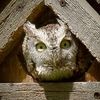Hummingbirds, lenses and settings?
May 23, 2012 14:57:14 #
birdpix wrote:
Here are a few tips on photographing Hummingbirds:... (show quote)
Great tips; thanks for sharing!
Jun 1, 2012 02:18:33 #
bkyser wrote:
I've used flash to stop the motion very effectively. The hummingbirds get skiddish and leave, but come right back. My issue is getting the auto focus to work when I'm firing remotely. Hundreds of shots to get one or two that are just acceptable. I love hummingbirds, but they are making me lose my hair.
I solved the auto focus problem I struck. Take a look at:
http://www.uglyhedgehog.com/t-36117-1.html "Timing...." You won't get the flash to fire at that speed if you use rapid shooting (does it do that on very low power?) but you'll solve the focus problem and use the flash for a single shot.
Jun 1, 2012 21:23:46 #
birdpix wrote:
Here are a few tips on photographing Hummingbirds:... (show quote)
Thanks for the advice and WOW to your picture! If I could only get one almost that good...
Jun 5, 2012 00:49:34 #
serrota65 wrote:
Typical Typical stats for the following images: Hand-held Nikon D5000 at ISO 1000, with Nikkor 55-200 zoom at 200-mm, 1/2000-sec at f/8, mid-morning full sun, directly behind photographer.Please post your hummers here if you like.
Allen's Hummingbird (Selasphorus sasin), female #1
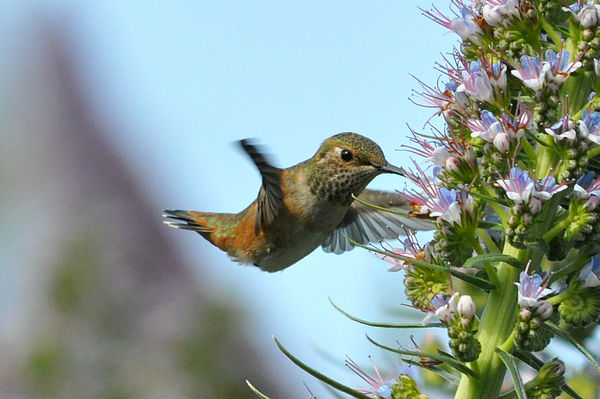
Allen's Hummingbird (Selasphorus sasin), female #2
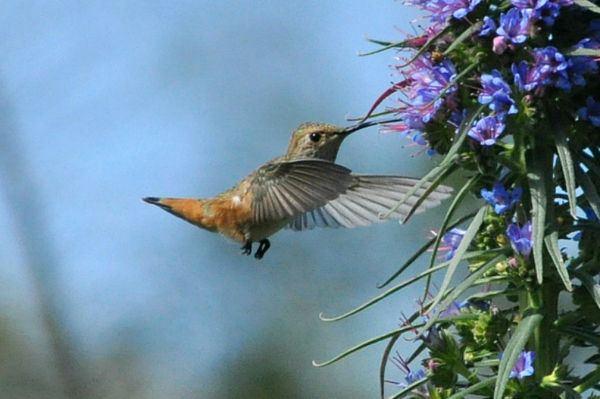
Anna's Hummingbird, male #1
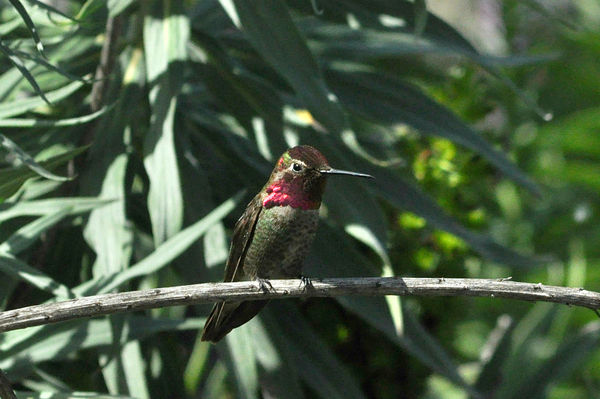
Anna's Hummingbird, male #2
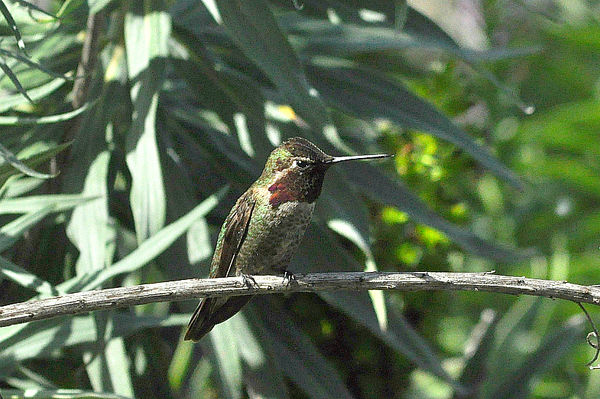
Allen's Hummingbird, female #3
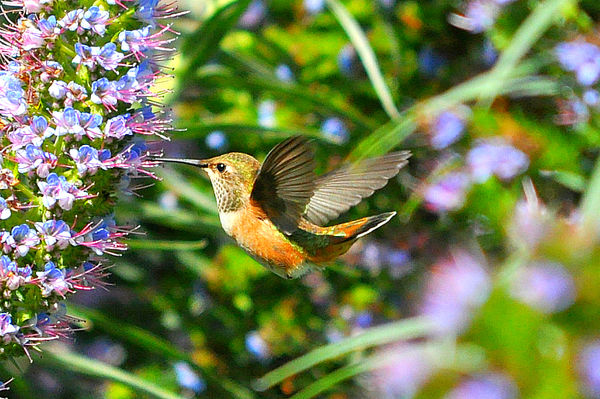
Allen's Hummingbird, female #4
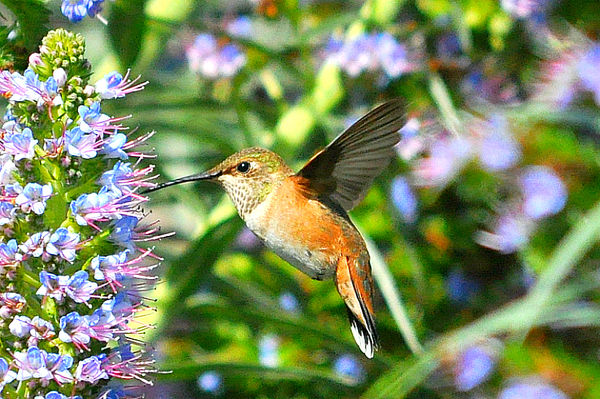
Allen's Hummingbird, female #5
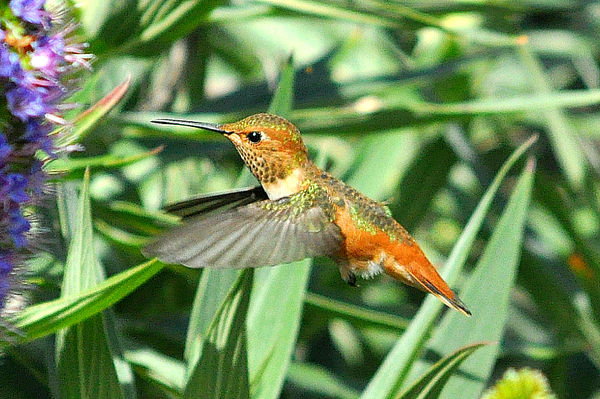
Allen's Hummingbird, female #6
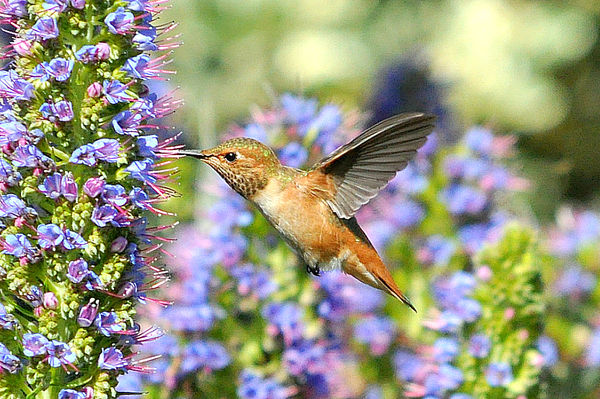
Black-chinned Hummingbird, male #1
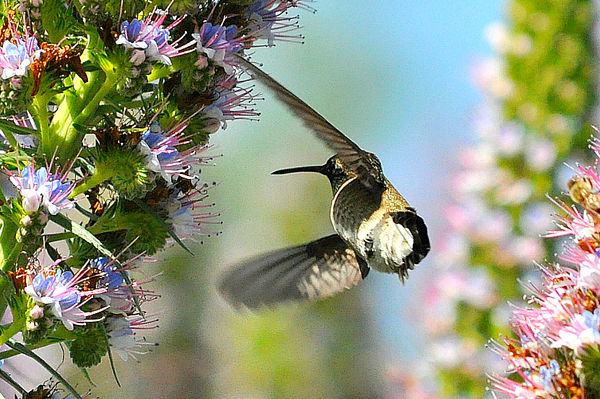
Allen's Hummingbird, female #7
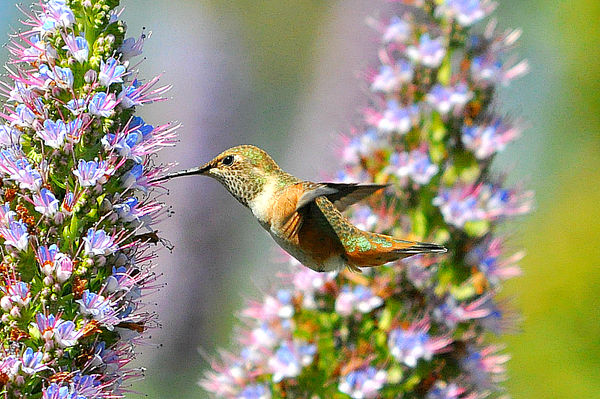
Allen's Hummingbird, female #8
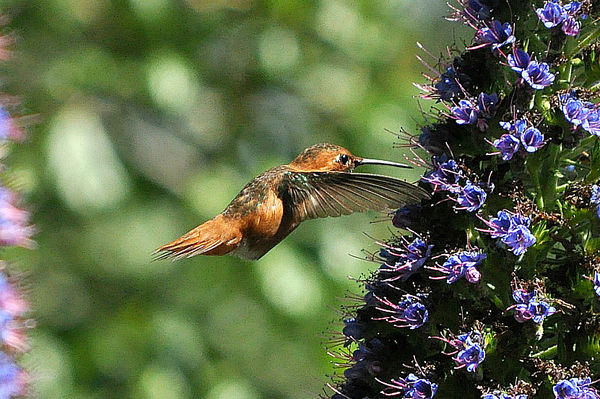
Jun 5, 2012 04:27:17 #
glojo
Loc: South Devon, England
What amazing pictures and DEFINITELY an example of when a fast shutter speed can freeze the motions of those wings.
I had to call my wife to look at these beautiful images.
I have never seen a humming bird and I'm curious as to how close you can get to take these types of picture? :thumbup:
I had to call my wife to look at these beautiful images.
I have never seen a humming bird and I'm curious as to how close you can get to take these types of picture? :thumbup:
Jun 6, 2012 10:17:24 #
Nikonian72 wrote:
serrota65 wrote:
Typical Typical stats for the following images: Hand-held Nikon D5000 at ISO 1000, with Nikkor 55-200 zoom at 200-mm, 1/2000-sec at f/8, mid-morning full sun, directly behind photographer.Please post your hummers here if you like.
Nikonian72: Well done! Beautiful photos! I am jealous that you have so many varieties to shoot. On the East Coast we only have the Ruby-throated as regular breeders and only a rare visit from some of their west coast cousins. Again, beautiful and thanks for sharing.
Jun 6, 2012 12:52:31 #
Aug 5, 2012 06:40:29 #
Country's Mama wrote:
Go to your menu-wrench-remote on duration. I can set my D3000 to 15 min. If nothing happens in say 14 min just shoot a picture and you have another 15 min.
That's what I go for. My small olympus goes off after no activity in about 5 or so mins. So I take shots just to keep the camera on.
Aug 5, 2012 14:40:17 #
Aug 12, 2012 03:32:23 #
Thanks for the tips and tricks on Hummers.
I want to share one I didn't see you comment about.
Use a Scarecrow in a chair near where the Hummers congregate, then when you want to take photos, you take the place of the ScareCrow and they have already become acclimated to someone being in the chair and pay little attention until you move.
Bullfrogs
I want to share one I didn't see you comment about.
Use a Scarecrow in a chair near where the Hummers congregate, then when you want to take photos, you take the place of the ScareCrow and they have already become acclimated to someone being in the chair and pay little attention until you move.
Bullfrogs
Aug 12, 2012 21:42:57 #
Douglas,
I have a Nikon D80 camera with a 70-300 MM Sigma DG lens. The lens can be set to normal or macro 200-300. For hummers what should I use M S or A or should I go back to Auto. Also I can get my cardinal flower in focus but not the hummer. I have the ISO set to 1600 or sometimes H3. Shooting in manual everything lines up to get a great exposure but with hummingbirds I'm not seeing that. I don't have trouble getting close to them about 8 or 10' away.
Is there anything I can do to get the higher speeds.
I have a Nikon D80 camera with a 70-300 MM Sigma DG lens. The lens can be set to normal or macro 200-300. For hummers what should I use M S or A or should I go back to Auto. Also I can get my cardinal flower in focus but not the hummer. I have the ISO set to 1600 or sometimes H3. Shooting in manual everything lines up to get a great exposure but with hummingbirds I'm not seeing that. I don't have trouble getting close to them about 8 or 10' away.
Is there anything I can do to get the higher speeds.
Here is the cardinal flower but I must have deleted the hummers at the flower because they were out of focus.
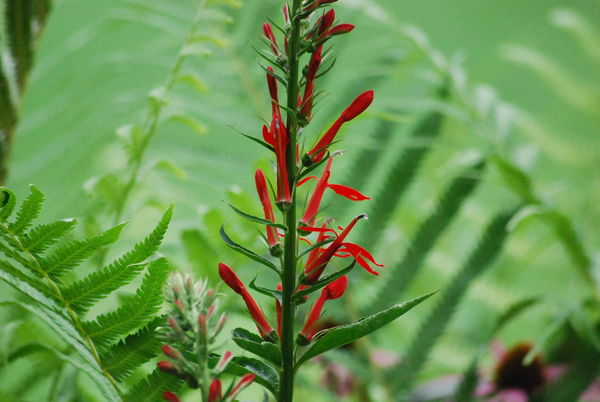
Aug 12, 2012 22:26:20 #
humming birds never get tired. Flash syncros stop the action quite well
Aug 13, 2012 20:43:44 #
Aug 14, 2012 04:09:55 #
serrota65 wrote:
OK, I'll try with a flash next time. Meanwhile, he... (show quote)
Much better! Great shots... I am jealous... :thumbup:
Aug 14, 2012 04:14:59 #
Nikonian72 wrote:
serrota65 wrote:
Typical Typical stats for the following images: Hand-held Nikon D5000 at ISO 1000, with Nikkor 55-200 zoom at 200-mm, 1/2000-sec at f/8, mid-morning full sun, directly behind photographer.Please post your hummers here if you like.
Oh My!...Now I am REALLY jealous... Fabulous, fabulours shots! Something to strive for. Hmmmm let's see...4:15 a.m... 2 1/2 hours before sunrise...guess I have time to get my gear ready.. ;-)
If you want to reply, then register here. Registration is free and your account is created instantly, so you can post right away.




